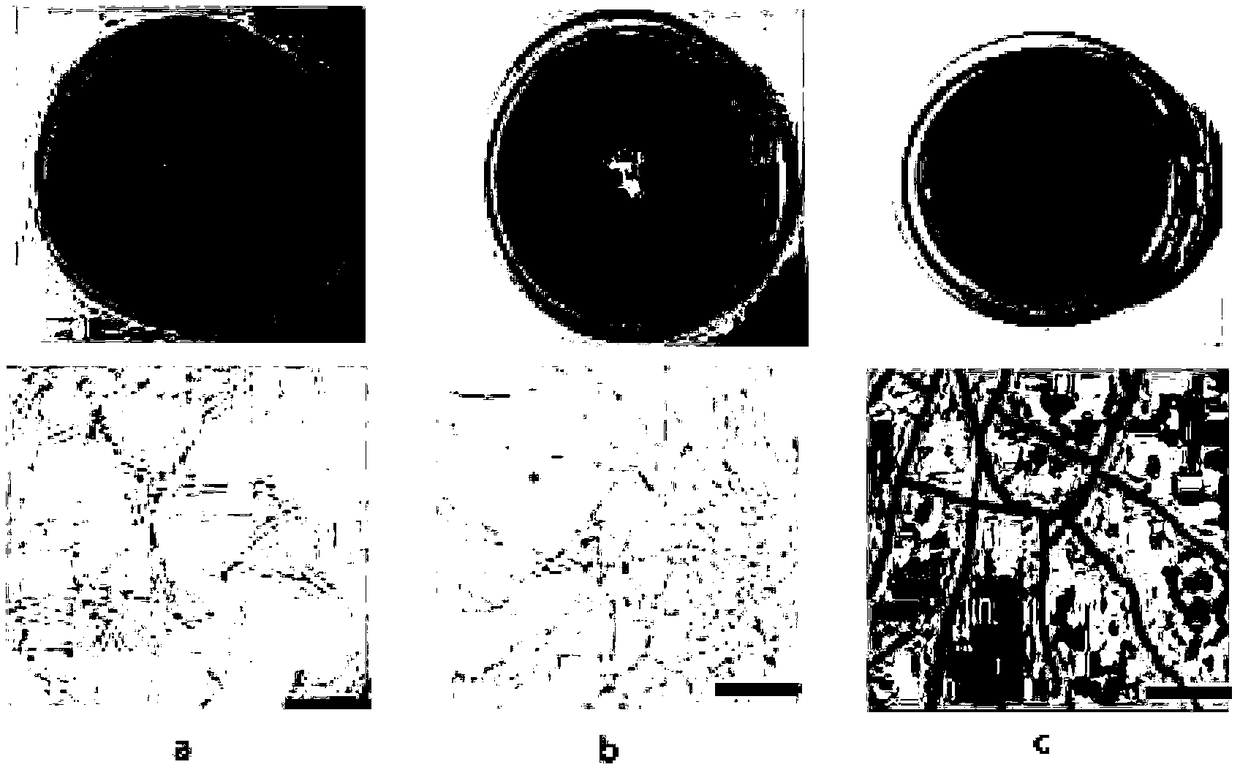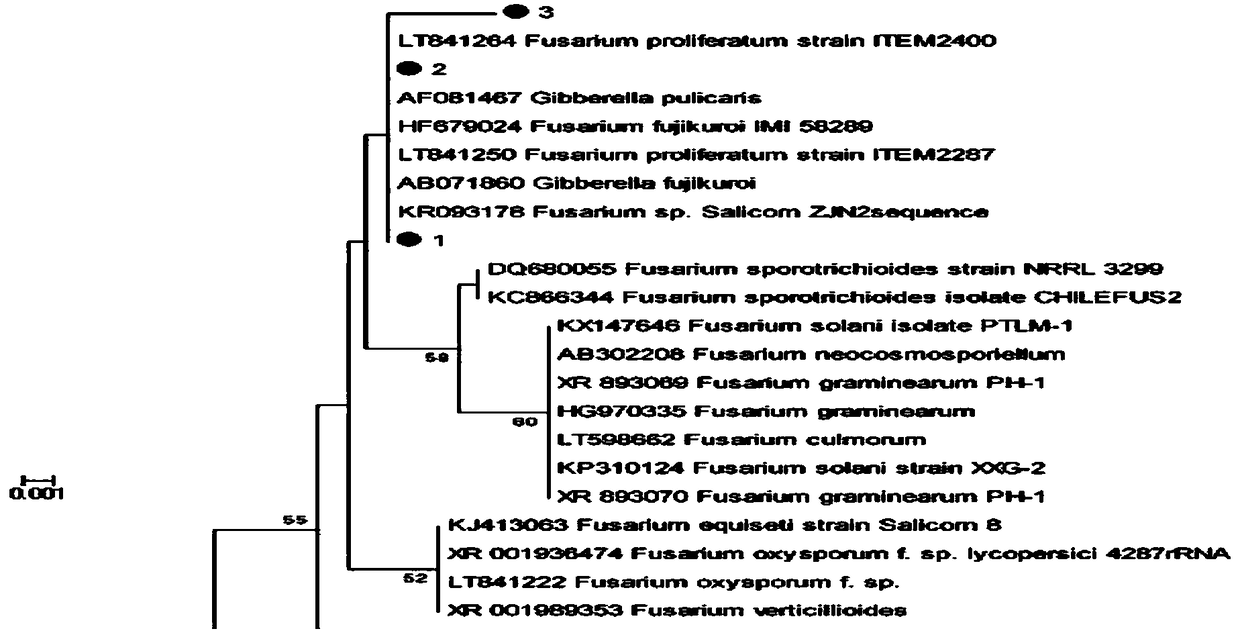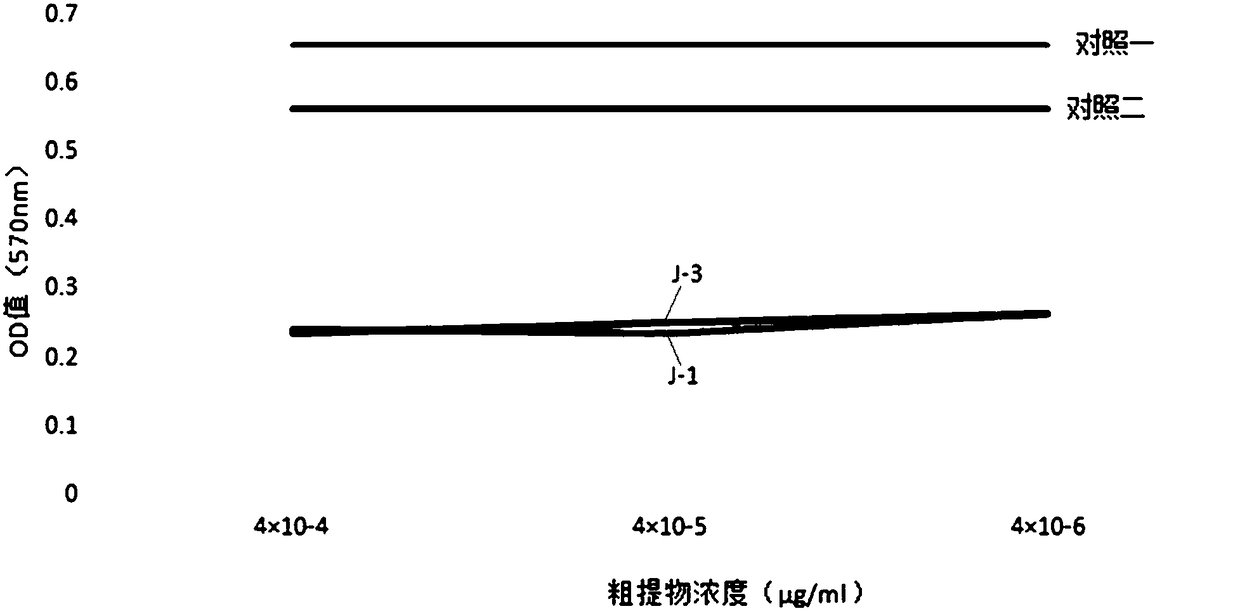Ginkgo endophytic fungus and application thereof
A technology of endophytic fungi and ginkgo, applied in the field of microorganisms, can solve the problems of slow growth of ginkgo, little anti-tumor activity, and few endophytic fungi of ginkgo
- Summary
- Abstract
- Description
- Claims
- Application Information
AI Technical Summary
Problems solved by technology
Method used
Image
Examples
Embodiment 1
[0023] Example 1: Screening and Identification of Ginkgo Endophytic Fungi
[0024] Separation material: Ginkgo is collected from Linyi City, Shandong Province. The material part is the trunk bark about 2cm above the ground, with a thickness of about 3-8mm. The age of the ginkgo tree is about 30 years, and the trunk diameter is about 55cm. Take the collected fresh ginkgo bark, wash its surface with distilled water, remove the outer skin after slightly drying, cut the xylem into small sections of suitable length, soak in 75% ethanol for 6 minutes, and then rinse with sterile water for 2- 3 times, blot dry with sterile filter paper. Then cut it into small pieces and place it on the PDA medium containing streptomycin and penicillin, and culture it in a 25°C incubator for 3-20 days. After hyphae grow around the tissue, transfer it to a new PDA culture medium. On the basis, the culture was continued in a 25°C incubator. Until the grown colonies were identified as pure bacteria. T...
Embodiment 2
[0026] Example 2: Research on antitumor activity of endophytic fungi of Ginkgo biloba
[0027] Preparation of fermentation broth and mycelial crude extract: excavate three strains of Ginkgo biloba endophytic fungi cultured in PDA solid medium, inoculate the mycelium block into a conical flask with 250ml PDA liquid medium, 20°C, 120r / min shaker culture 7d. Then, ethyl acetate was added to each flask at a volume ratio of 1:1, and the culture was continued in a shaker for 4 days. After the fermentation liquid is filtered through 3-4 layers of gauze, the mycelium is removed, and the separation funnel is used for stratification to obtain the organic phase containing the secondary metabolites of the ginkgo endophytic fungus. A rotary evaporator is used to recover most of the ethyl acetate in the organic phase to obtain a concentrated solution containing secondary metabolites of endophytic fungi of Ginkgo biloba. Finally, use a vacuum concentration dryer to completely dry the conc...
Embodiment 3
[0031] Example 3 Research on Antitumor Active Substances of Ginkgo Endophytic Fungi
[0032] Semi-preparative HPLC method was used to analyze and separate the secondary metabolites of endophytic fungi of Ginkgo biloba: the chromatographic column was C18 column (250mmx10mm, 5μm), and the mobile phase was methanol-water. Elution with 20% methanol, volume flow rate 1.0ml / min, detection wavelength 210nm, column temperature 35°C, injection volume 100μl. According to the peak shapes of secondary metabolites of different strains, different substances were separated. Each substance was co-cultured with cervical cancer HeLa cells, and the effective anti-cervical cancer tumor active substances were determined by MTT method.
[0033] The secondary metabolites of strains J-1 and J-3 were separated and determined by semi-preparative HPLC, and the separation results were as follows: Figure 4 and Figure 5 As shown, from the semi-preparative HPLC peak profile ( Figure 4 and Figure 5 ...
PUM
 Login to View More
Login to View More Abstract
Description
Claims
Application Information
 Login to View More
Login to View More - R&D
- Intellectual Property
- Life Sciences
- Materials
- Tech Scout
- Unparalleled Data Quality
- Higher Quality Content
- 60% Fewer Hallucinations
Browse by: Latest US Patents, China's latest patents, Technical Efficacy Thesaurus, Application Domain, Technology Topic, Popular Technical Reports.
© 2025 PatSnap. All rights reserved.Legal|Privacy policy|Modern Slavery Act Transparency Statement|Sitemap|About US| Contact US: help@patsnap.com



